#70 Little-known facts about Meiji Jingu Shrine
It looks like a natural forest, but it is well well-calculated human-made forest.
The Meiji Jingu Shrine is undoubtedly one of the places that almost every foreigner visiting Tokyo would like to go to. With its meticulously calculated landscaping, tranquility in the heart of the city, and above all, a solemnity that washes visitors' hearts, the Meiji Jingu Shrine is a place that will remain in the hearts of all visitors, regardless of whether or not they are interested in Shinto.
I have guided visitors from overseas to Meiji Jingu Shrine many times, and have slightly changed the content of the tour depending on their interests, but there is one thing that I always tell my clients. It is about the forest where we walk. In addition, I am usually not interested in fortune-telling at any temple or shrine, but the Meiji Shrine is a little different. This week, I'll write about why I am so particular about these.
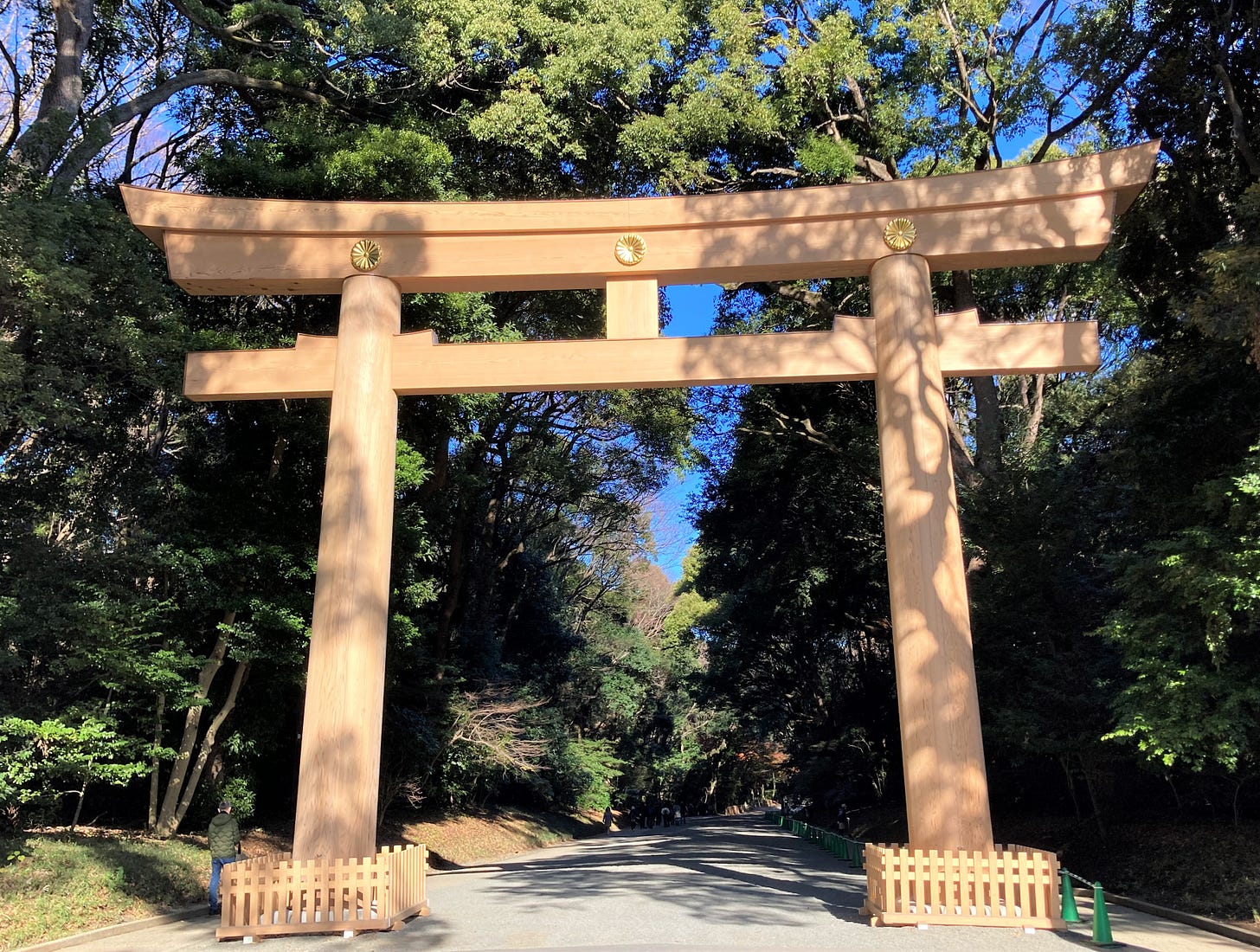
Meiji Jingu Shrine in brief
Meiji Jingu was established in 1920 to honor Emperor Meiji and Empress Shoken, who played pivotal roles in the modernization of Japan during the late 19th and early 20th centuries.
Emperor Meiji reigned from 1867 to 1912 and oversaw Japan's transformation from a feudal society to a modern nation-state. His reign marked the Meiji Restoration, which involved political, social, and economic reforms. Empress Shoken was a devoted partner to Emperor Meiji and was known for her philanthropic work, especially in education and welfare. She played a significant role in supporting initiatives that benefited the Japanese people.
Meiji Jingu Shrine was built in Tokyo, Japan, to honor Emperor Meiji and Empress Shoken. It was constructed between 1915 and 1921 as a way to commemorate their contributions to modernizing Japan and to promote Shintoism, the indigenous religion of Japan, which was closely associated with the imperial family. A shrine is also a place of tranquility and a symbol of national unity.
The shrine's construction was a massive undertaking, with volunteers contributing over 100,000 trees from across Japan to create the lush forest surrounding the shrine. The shrine buildings were built in the traditional Nagarezukuri style, featuring cypress wood and copper roofing.
The following site shows the brief background of the forest. I quoted from Meiji Jingu Shrine HP.
Creating an Eternal Forest by Dr Seiroku Honda
The vegetation of the Meiji Jingu Shrine was designed by Dr Seiroku Honda, a doctor of forestry, known as the "father of parks" in Japan and designed 60 park plantings, including Hibiya Park. Many visitors may think that the Meiji Shrine is a natural forest, but it's a carefully calculated man-made forest.
It was designed under the leadership of Dr Seiroku Honda with an emphasis on diversity (variety) and multi-tiered (different heights), with little human intervention, and to create a natural forest that will endure repeated generational change by the forces of nature. This forest, created by the wisdom of his predecessors, is now considered one of the greatest masterpieces of man-made forests.
Dr Seiroku Honda and his colleagues considered tree species appropriate to the climatic conditions and the land, as well as countermeasures against pollution problems. They decided that coniferous trees such as cedar, cypress, and pine would be difficult to maintain safely forever in the dry land of Yoyogi and against smoke pollution, and decided that the main trees would be evergreen broad-leaved trees such as oak, and camphor. The forestation plan selected evergreen broadleaf trees such as oak, and camphor trees because they regenerate by naturally falling seeds, can be maintained and regenerated for a long time without human intervention, are resistant to smoke damage, and form a majestic shrine forest in the precincts of the shrine. On the way to the main hall, you will recognize the concept of the forest.
Emperor Meiji and Empress Shoken who loved waka poetry
Emperor Meiji and Empress Shoken loved waka poems very much, and it has been said that the number of waka poems composed by the Empress was 36,000 and by the Emperor 93,000, always praying for the prosperity of the nation and its people and peace in the world. The content of her waka poems conveys this love.
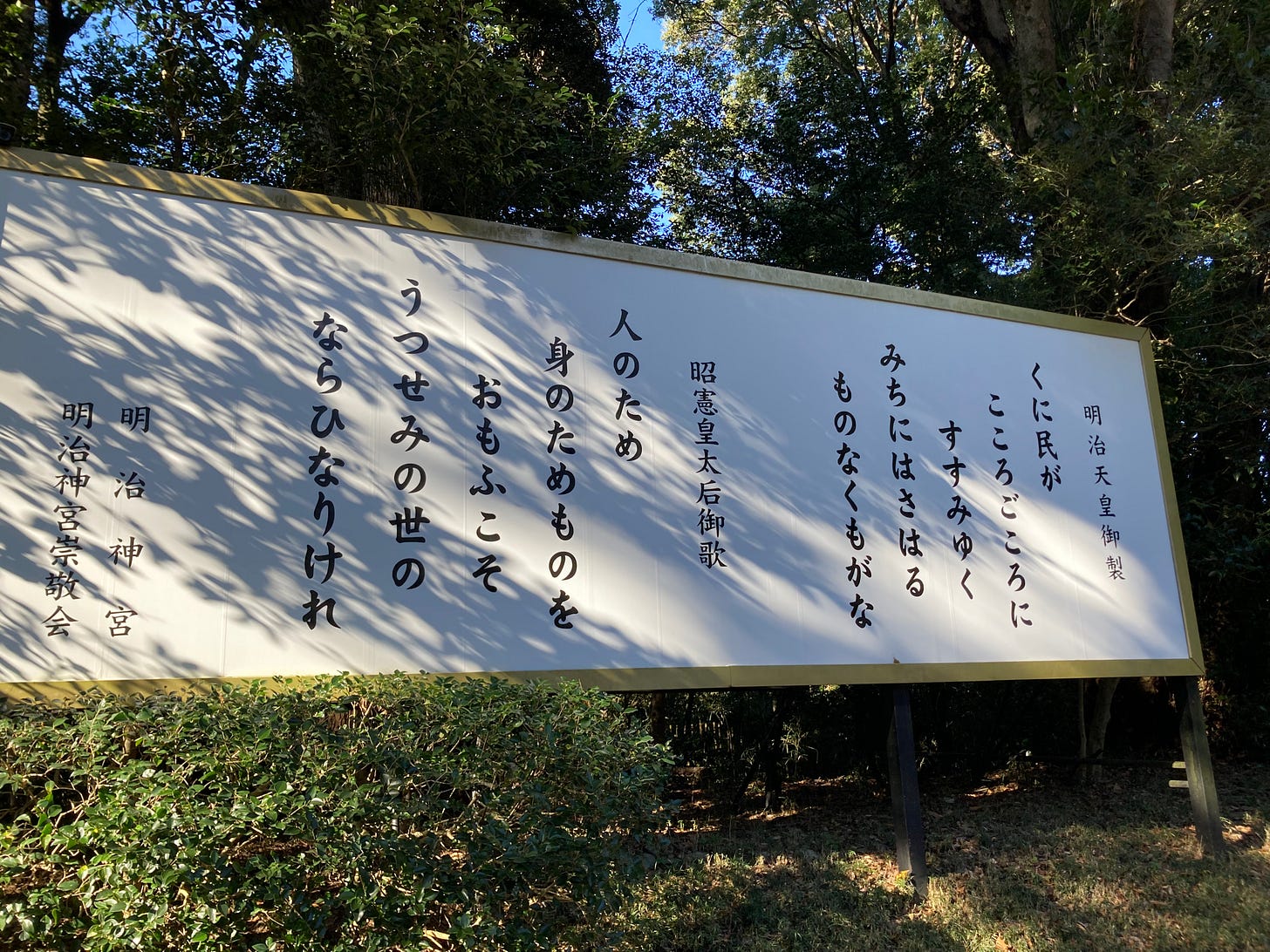
If you have ever been to a temple or shrine in Japan, you know that "omikuji" exists. Omikuji is a Japanese tradition where people draw random fortune slips at Shinto shrines and Buddhist temples to receive predictions and advice for various aspects of their lives.
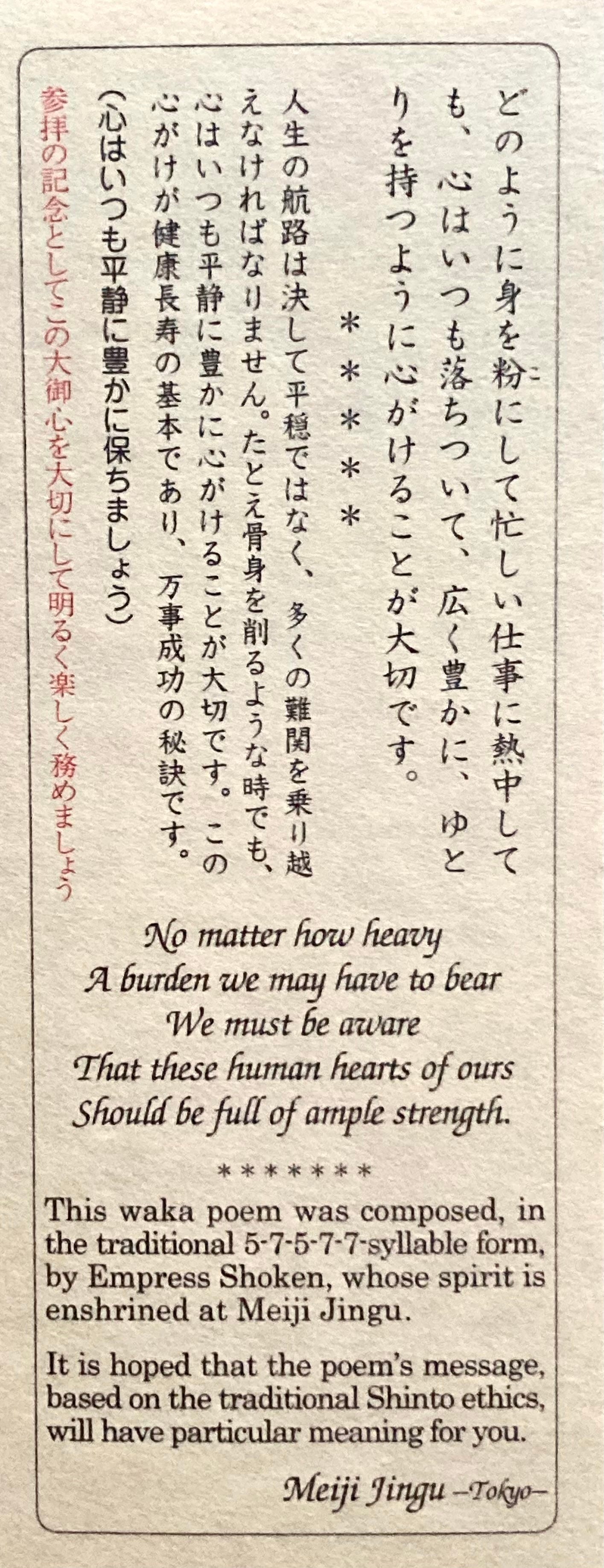
There are several places where one can receive omikuji at Meiji Jingu Shrine, and I recommend focusing on how it is written. While most of the omikuji at temples and shrines directly express future fortune, such as "Daikichi," "Kichi," etc., the omikuji at Meiji Jingu Shrine contains a waka poem written by the Emperor or Empress. There are no specific expressions such as "be careful of illnesses. " Everyone who reads the omikuji can interpret it and use it. It may not be enough for some people, but I like its "moderation". It can be used as a bookmark or other souvenir.
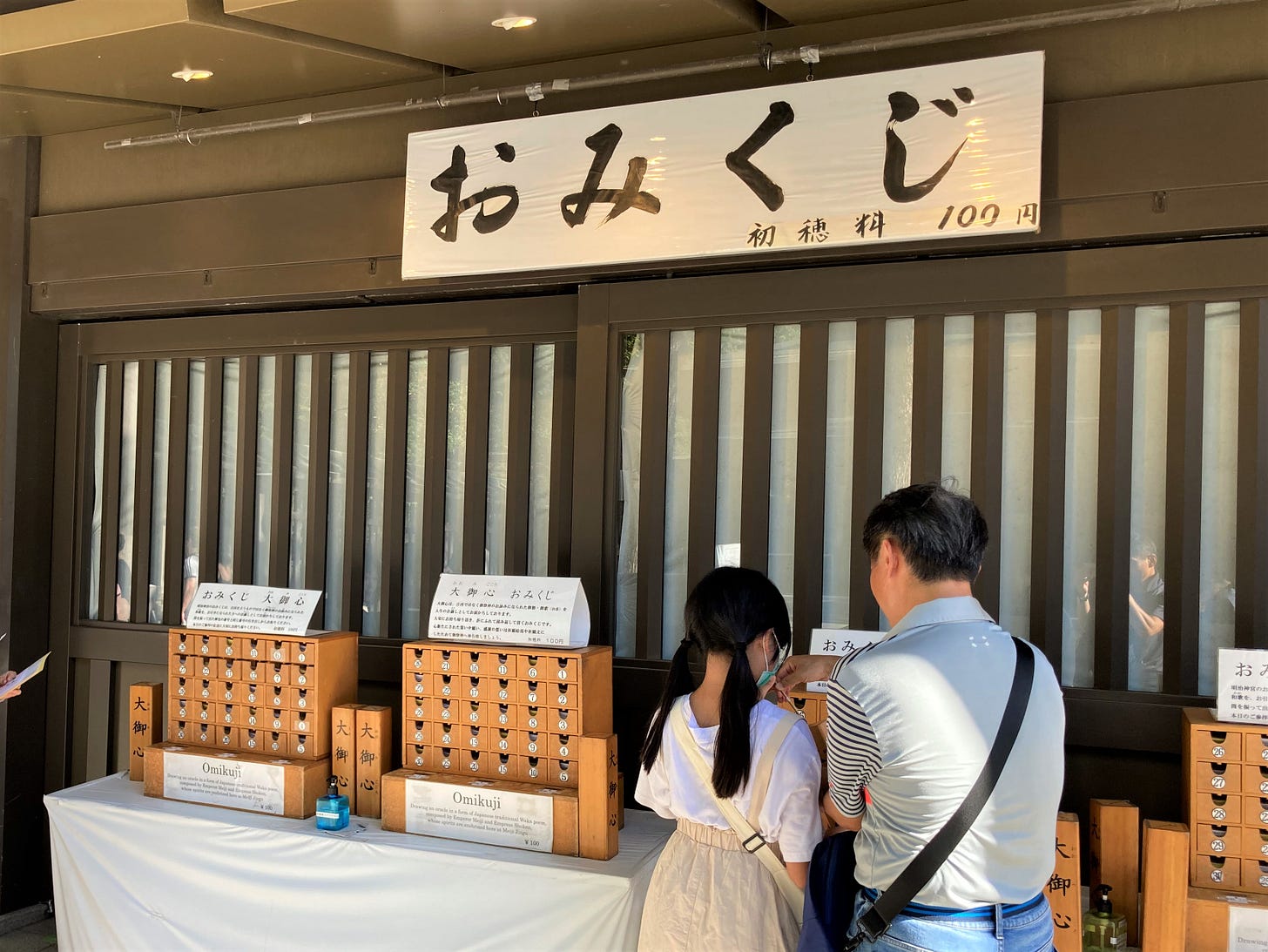
Tips for visiting Meiji Jingu Shrine
There are basic manners that you should be aware of before you visit.
Before passing through the gate at the entrance, you are asked to bow and tighten your spirits before entering the temple grounds. The center of the approach is considered the path of the deity, so proceed on the left side of the road.
Please purify yourself with water before going to the main sanctuary.
Place your money in the offertory box. Bow twice, clap your hands twice, and then put your hands together, and pray and bow again before you leave.
The following are some tips you can make use of.
Ideal time: The Shrine opens when the sum is up and closes when the sun is down. The earlier you get there, you will enjoy the quiet atmosphere.
Wedding ceremony: The shrine is a very famous place for wedding ceremonies. On Saturday or Sunday morning after 10:00, you may have a chance to see the procession of the family. I feel sorry for those who have the ceremony since all foreign tourists take pictures, and they will go up on social media without consent.
Iris garden: On the way to the main hall, there is an inner garden, and you can see Iris flowers in June. It may be worth checking if you are visiting at that time.
If everyone who reads this post has a chance to visit Meiji Jingu Shrine, I would be happy if this article changes your view even a little.





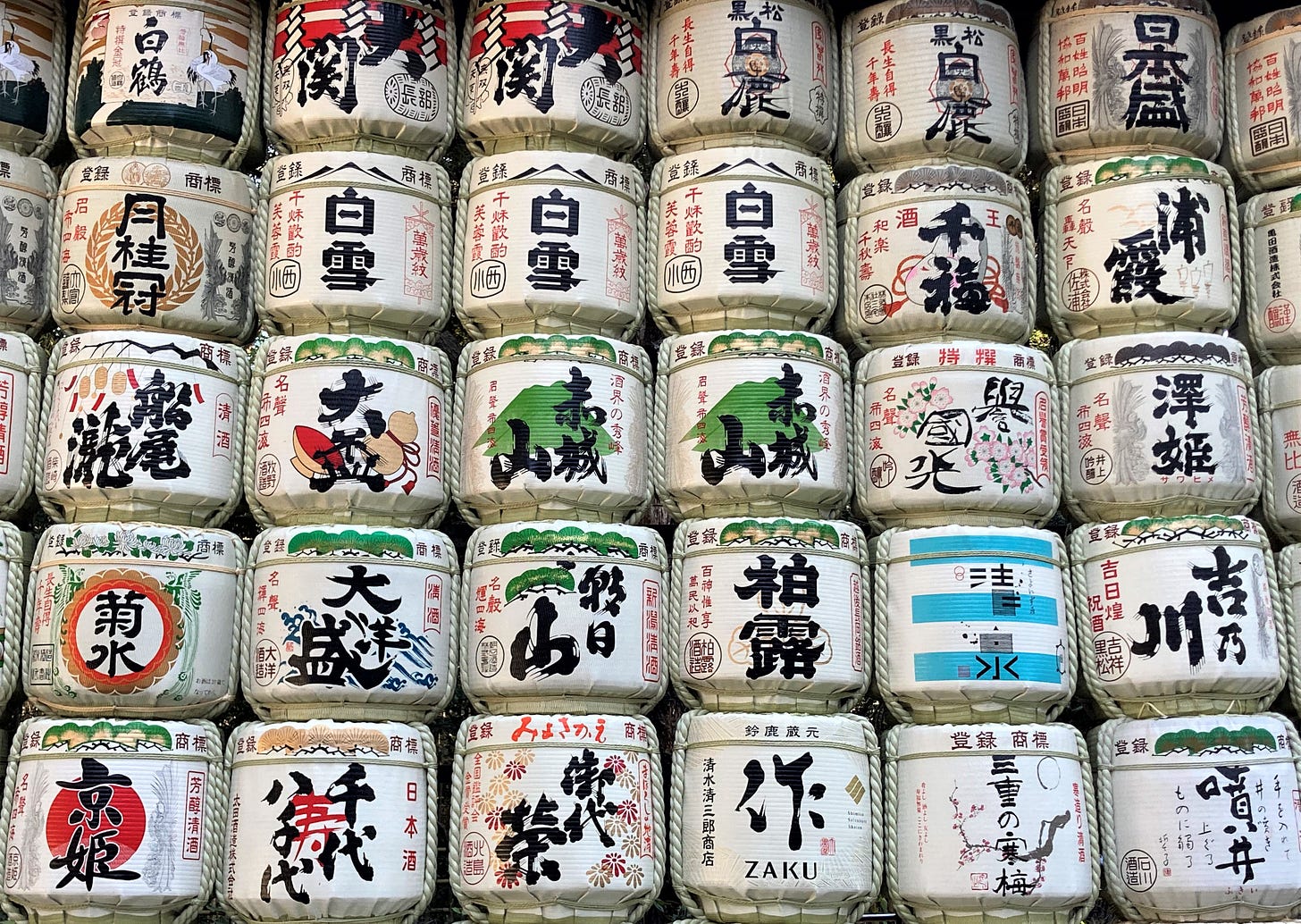


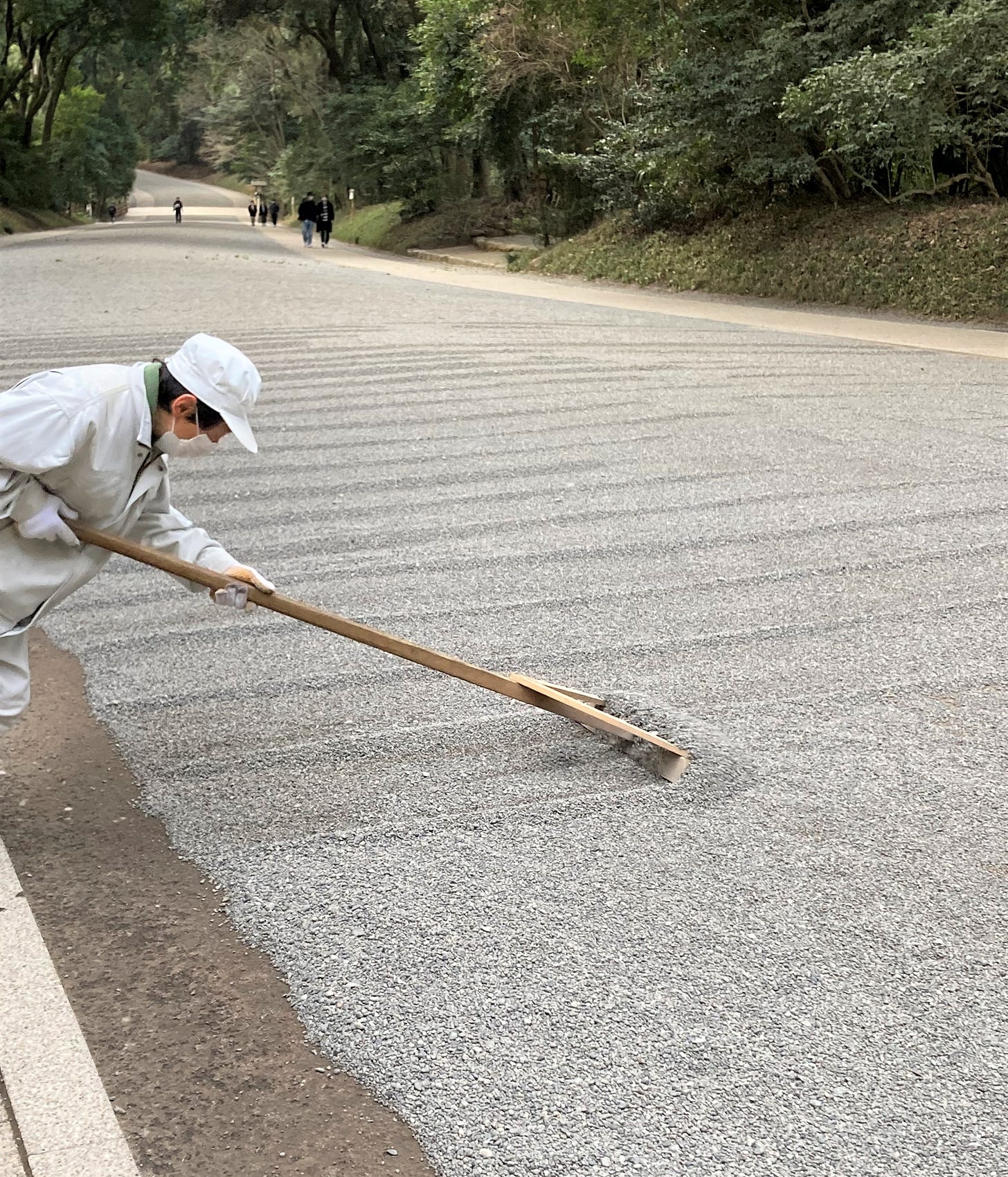
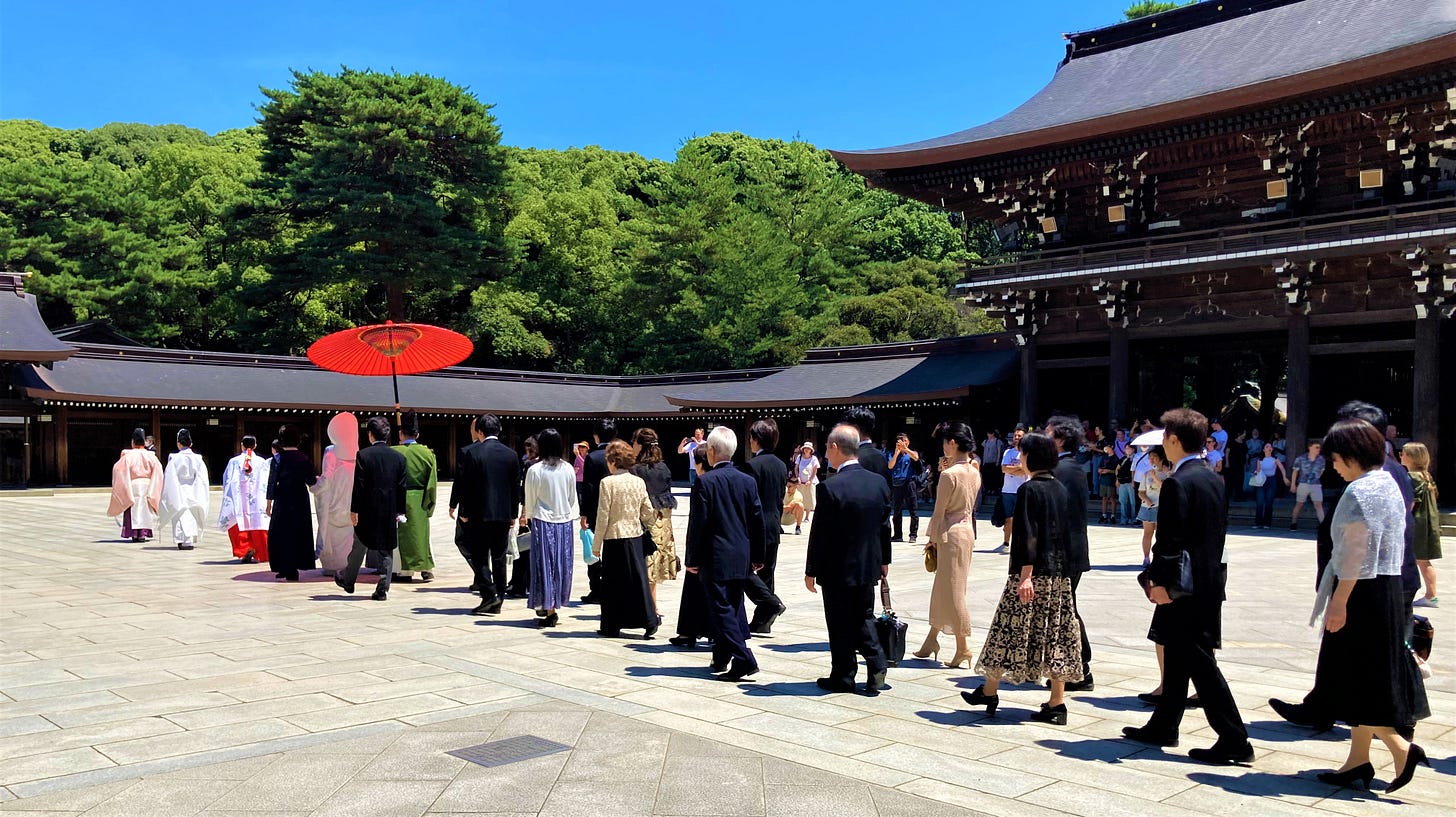
Great subject for a write up. Thank you!